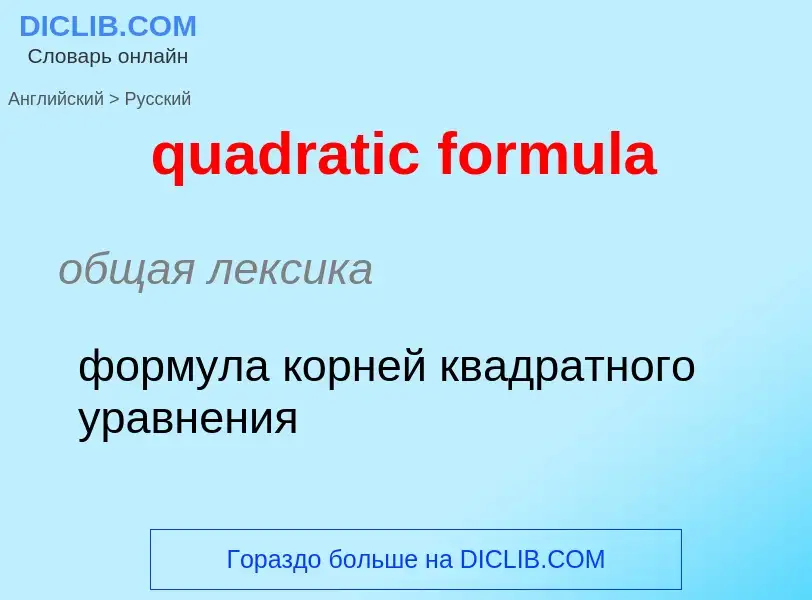Tradução e análise de palavras por inteligência artificial
Nesta página você pode obter uma análise detalhada de uma palavra ou frase, produzida usando a melhor tecnologia de inteligência artificial até o momento:
- como a palavra é usada
- frequência de uso
- é usado com mais frequência na fala oral ou escrita
- opções de tradução de palavras
- exemplos de uso (várias frases com tradução)
- etimologia
quadratic formula - tradução para russo
общая лексика
формула корней квадратного уравнения
математика
квадратичная иррациональность
общая лексика
квадратичная иррациональность
Definição
Wikipédia
In elementary algebra, the quadratic formula is a formula that provides the solution(s) to a quadratic equation. There are other ways of solving a quadratic equation instead of using the quadratic formula, such as factoring (direct factoring, grouping, AC method), completing the square, graphing and others.
Given a general quadratic equation of the form
whose discriminant is positive, with x representing an unknown, with a, b and c representing constants, and with a ≠ 0, the quadratic formula is:where the plus–minus symbol "±" indicates that the quadratic equation has two solutions. Written separately, they become:
Each of these two solutions is also called a root (or zero) of the quadratic equation. Geometrically, these roots represent the x-values at which any parabola, explicitly given as y = ax2 + bx + c, crosses the x-axis.
As well as being a formula that yields the zeros of any parabola, the quadratic formula can also be used to identify the axis of symmetry of the parabola, and the number of real zeros the quadratic equation contains.
The expression b2 − 4ac is known as discriminant. If the discriminant is positive (b2 − 4ac ≥ 0) then it has two real square roots; otherwise, it has two complex roots. If a, b, and c are real numbers and a ≠ 0 then
- If b2 − 4ac > 0 then there are two distinct real roots or solutions to the equation ax2 + bx + c = 0.
- If b2 − 4ac = 0 then there is one repeated real solution.
- If b2 − 4ac < 0 then there are two distinct complex solutions, which are complex conjugates of each other.

